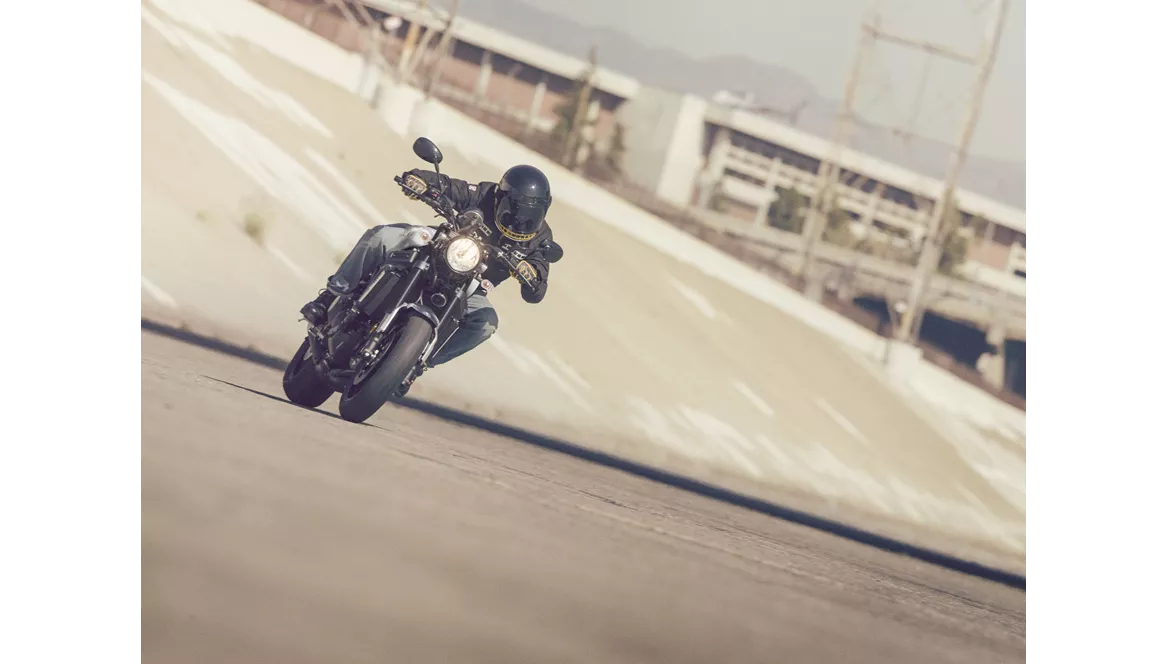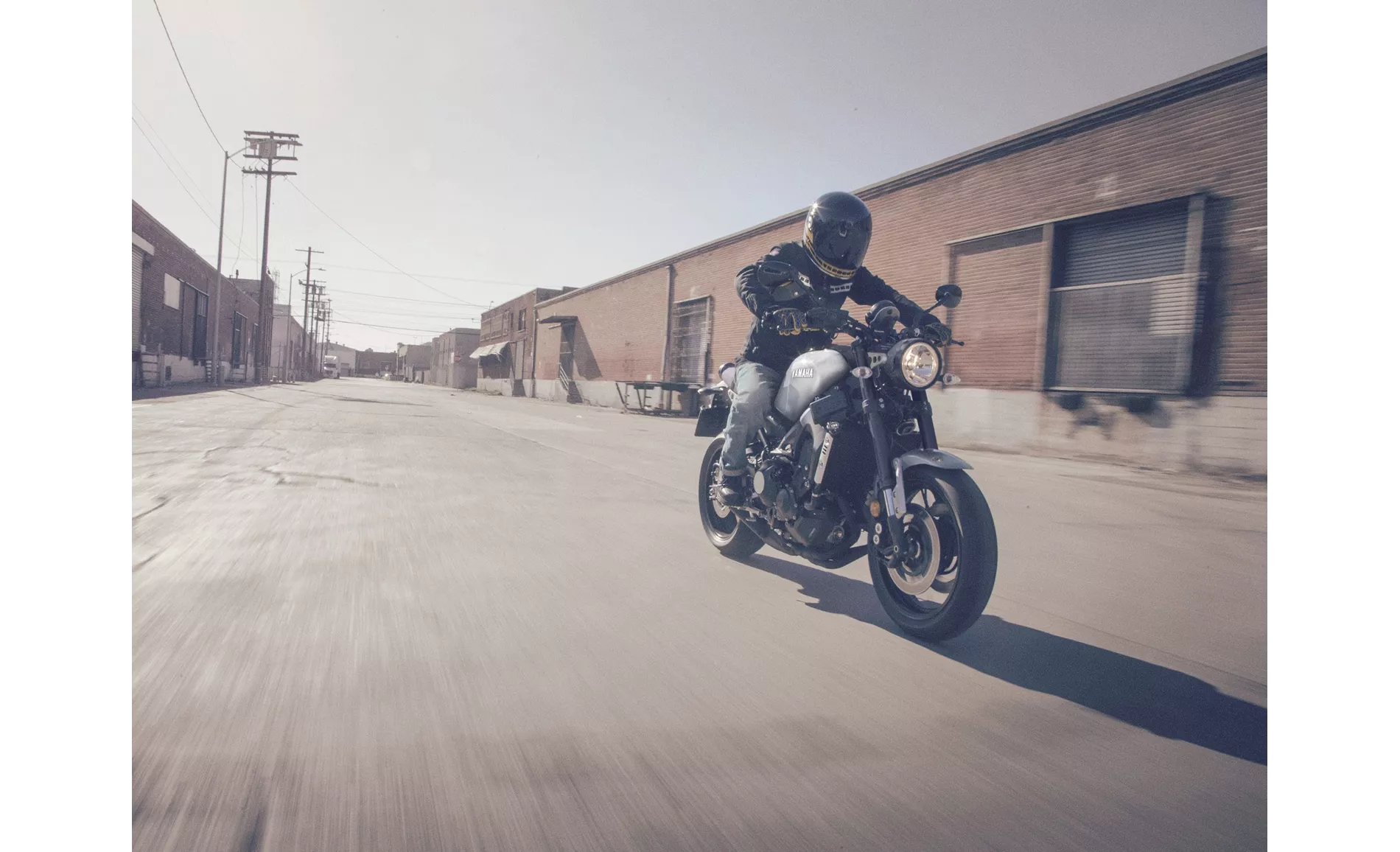Yamaha XSR900 2018 vs. Suzuki SV650X 2018

Yamaha XSR900 2018

Suzuki SV650X 2018
Pregled - Yamaha XSR900 2018 vs Suzuki SV650X 2018
The Yamaha XSR900 2018 and the Suzuki SV650X 2018 are both naked bikes that offer unique features and characteristics.
In terms of engine and drive train, the Yamaha XSR900 is equipped with an in-line, 3-cylinder engine that delivers 115 HP of power and 87.5 Nm of torque. On the other hand, the Suzuki SV650X features a V2 engine that produces 76 HP of power and 64 Nm of torque. The Yamaha XSR900 has a higher power output, making it more suitable for riders who prefer a sportier and more rev-happy engine.
Both bikes have liquid cooling systems and monoshock rear suspensions. However, the Yamaha XSR900 has an upside-down telescopic fork for the front suspension, while the Suzuki SV650X has a telescopic fork. The Yamaha XSR900 also has a twin tube aluminum frame, which is known for its lightweight and rigidity, while the Suzuki SV650X has a steel tubular frame.

Yamaha XSR900 2018
In terms of braking, both bikes are equipped with double disk brakes at the front, but the Yamaha XSR900 has larger diameter disks (298 mm) compared to the Suzuki SV650X (290 mm).
Both bikes have advanced rider assistance systems such as ABS.
In terms of dimensions and weights, the Yamaha XSR900 has a slightly wider front tire (120 mm) compared to the Suzuki SV650X (120 mm), and a wider rear tire (180 mm) compared to the Suzuki SV650X (160 mm). Both bikes have a 17-inch front and rear tire diameter. The Yamaha XSR900 has a slightly shorter wheelbase (1440 mm) compared to the Suzuki SV650X (1445 mm). The seat height of the Yamaha XSR900 is also slightly higher (815 mm) compared to the Suzuki SV650X (785 mm). The Yamaha XSR900 is slightly lighter with a kerb weight of 191 kg (with ABS) compared to the Suzuki SV650X which weighs 197 kg (with ABS). Both bikes have a fuel tank capacity of around 14 liters.

Suzuki SV650X 2018
In terms of strengths, the Yamaha XSR900 is praised for its extremely sporty and rev-happy engine, excellent brakes, and pleasant seating position. It is also known for its high-quality workmanship and price-performance ratio. On the other hand, the Suzuki SV650X is praised for its agile, lively, and charismatic V2 engine, easy handling, and pleasant seating position with a low saddle height. It is also commended for its successful gear graduation and low weight.
However, the Yamaha XSR900 has some weaknesses, including an almost too direct response and a retro style that is not thought through to the last detail. On the other hand, the Suzuki SV650X has weaknesses such as an inconspicuous appearance, exhaust look, a telescopic fork that is considered too soft, and the absence of an anti-hopping clutch.
Overall, both the Yamaha XSR900 2018 and the Suzuki SV650X 2018 offer unique features and strengths that cater to different riding preferences.
Tehničke specifikacije Yamaha XSR900 2018 u odnosu na Suzuki SV650X 2018
Prednosti i nedostaci u odnosu na
Prednosti i nedostaci u odnosu na
Yamaha XSR900 2018

The Yamaha XSR900 is a classic optical illusion - with its round headlight, angular tank and attached tail light, it clearly passes for a retro bike. But it's no coincidence that the performance is reminiscent of the potent mid-range naked bike Yamaha MT-09, which is the extremely sporty basis for the XSR900. So the engine is a blast and the brakes are appropriately venomous. Fortunately, the engineers didn't overdo it with the chassis, the XSR900 offers sufficient comfort and the upright riding position is more comfortable than the powerful engine would lead one to expect. All in all, the XSR900 is one of the sportiest models among the retro bikes.
Suzuki SV650X 2018

Retro is trendy, retro is cool. The people at Suzuki have also recognised this, and although they are not launching many new products for 2018, they are launching a really cool one - the SV650X. Not much had to be changed to place it in the ranks of modern cafe racers: Headlight fairing, paintwork, side panels, saddle and low handlebar ends are enough for the great result. Above all, the front-wheel-oriented seating position suits it well, but does not make it significantly more uncomfortable. The suspension can only be adjusted at the rear, but the lively engine is a blast and the price is right.
Usporedba cijena Prosječna tržišna cijena Yamaha XSR900 vs Suzuki SV650X
There are a few key differences between a Yamaha XSR900 2018 and a Suzuki SV650X 2018. There are the same number of bikes of both models available on the 1000PS.de marketplace, specifically 4. It takes less time to sell a Yamaha XSR900 with 123 days compared to 178 days for a Suzuki SV650X. Since model year 2016 1000PS.de editors have written 30 reviews for the Yamaha XSR900 and 5 reviews for the Suzuki SV650X since model year 2018. The first review for the Yamaha XSR900 was published on 11/25/2015 and now has more than 17,600 views. This compares to more than 36,800 views for the first review on Suzuki SV650X published on 11/7/2017.























